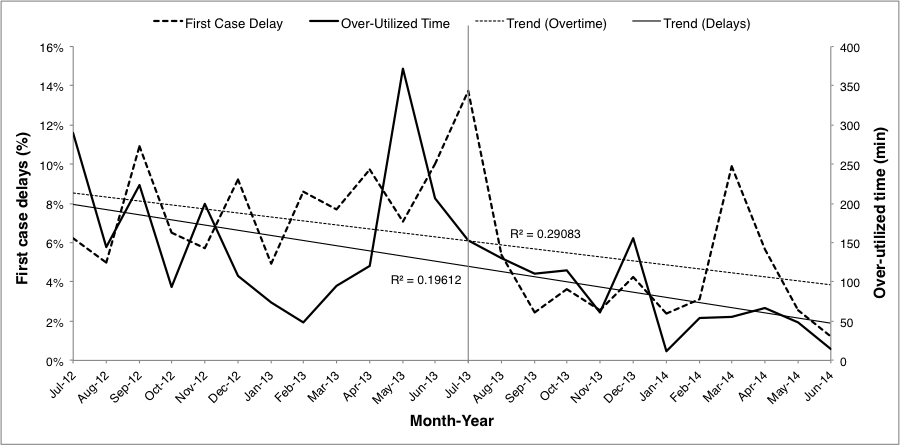A. J. Douglas2, R. Shoff2, G. D. Kennedy2, C. P. Heise2 2University Of Wisconsin,School Of Medicine And Public Health,Madison, WI, USA
Introduction: Decreasing under-utilized time in the operating room (OR) has been suggested as a means of achieving meaningful cost reductions for hospitals. One proposed method is to improve on time first case starts in the OR, though related financial analysis is lacking. The purpose of this study is to determine the downstream effect and financial impact of improving on-time starts for the first case of the day in the outpatient operating room at an academic teaching institution.
Methods: The Department of Surgery set a goal to decrease first case delays, specifically those attributable to surgeons. On time starts were defined as those beginning within 10 minutes of the scheduled start time. Beginning in fiscal year (FY) 2014, major efforts were made to improve surgeon related first start delays. On-time start percentage and over-utilized time were measured in the outpatient surgery setting and cost was estimated using a per-minute OR direct cost value. Fisher's exact chi square test was used to assess proportional differences in first case delay percentage between FY 2013 and 2014. An independent samples t-test was performed to analyze pre-post changes in mean monthly over-utilized time.
Results: At baseline, the rate of first-case delays in the Department of Surgery was 7.5%.Post improvement efforts, this rate improved to 4.8% (p < 0.05). The Department of Surgery saw a 51% drop in over-utilized time, corresponding to 998 fewer minutes that ORs ran past 5 pm.. The monthly average over-utilized time in the Department of Surgery decreased by 84 minutes per month (p < 0.05, 95% CI [22,146]). These improvements were estmated to translate into an average direct cost savings of $1,300.00 per month.
Conclusion: Improving on-time first case starts by promoting surgeon timeliness is associated with decreases in over-utilized time at the end of the OR day. While direct cost-savings in the outpatient surgery setting may be minimal, decreasing over-utilized time does have some financial benefit and likely improves the work environment by avoiding overtime staffing issues.
